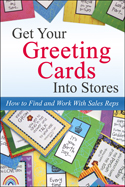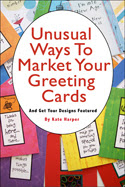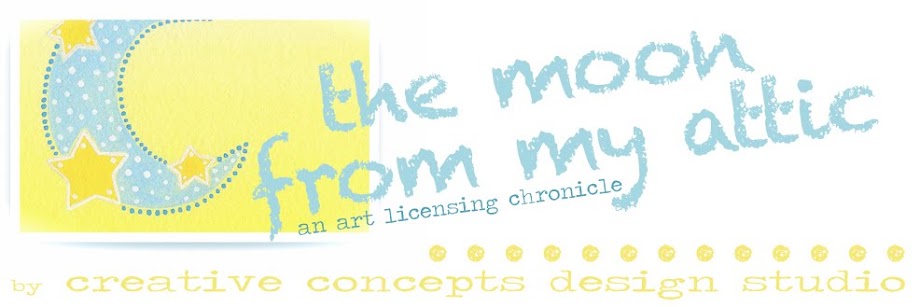


On an artist's budget?
Always check out the prices of used or discounted copies of the photoshop and other graphic software before investing in new versions. Sometimes you can get an older version that works for your needs.
Ebooks by Kate Harper
You can support this blog by ordering Kate's e-Booklets starting at only .99 cents! They can be read on your kindle, ipad, ipod, cellphone, or your computer. Free samples and lending options available. You can also view the list of all recommended greeting card books by a variety of authors.

Get Your Greeting Cards into Stores explains how to sell cards nationwide. Included are detailed guidelines on: How to price cards for a profit, get professional feedback, find sales representatives and follow industry standards. Information is also applicable to gift items, magnets, journals, calendars, collectibles, etc.
20 Steps to Art Licensing is a book about how to license your art to companies that publish greeting cards, or manufacture coffee mugs, magnets, wall hangings, kitchen items, and dozens of other gift items. Learn how to prepare your art, what companies to contact, how to find agents, and what trade shows to attend. Includes extensive resources on social media, copyrights, licensing community groups, and lists of interviews with professional designers.
7 Mistakes Greeting Card Writers is a booklet that explains what to avoid when submitting greeting card verse to publishers. Learn how to create a trendy card that reflects the contemporary world we live in, and how to use your own personal experience to create card verse. Topics include: how to avoid limiting your market, when to use adjectives, not creating card for enemies, write like people talk and a list of why card sentiment submissions are often rejected. You can increase your odds of success by 60% just by doing a few simple things. Includes a list of card publishers and their guidelines, links to writer interviews, and writing exercises for how to create good verse.
Unusual Ways To Market Greeting Cards, and 22 places to get your designs featured is a booklet on how to get your cards noticed in non-traditional ways. Everything from why you should send cards to your dentist, to how to get a special feature in national publication. Great tips for designers who are starting out and want to get their cards into the hands of people beyond friends and family. Special Section: 22 Gift Industry Trade Publications who seek out new greeting card designs and feature artists for free.
How to Make an EBook Cover for Non-Designers is an illustrated book will show you how to make your own e-book cover, even if you are not a designer. It is intended to help the indie writer who is on a budget and wants to publish and sell their own book in online stores such Amazon.com and the Apple ibookstore. Selling your book in these stores will allow readers to purchase your book and read it on multiple devices such as the Kindle, iPad, iPhone and many other electronic devices.











